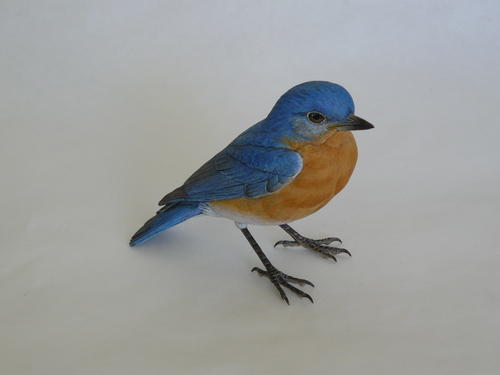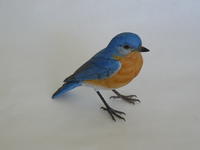Eastern Bluebird, Part Two
Here's how to carve this much-loved ambassador of happiness.

Jeff Rechin is recognized as an elite sculptor whose artistry and technique have garnered him two Best in World titles at the prestigious Ward World Championship. You can see more of Jeff’s work at http://jeffrechin.blogspot.com.
Instead of priming the entire bluebird with straight white gesso, I use gesso to make various base colors. This gives me a jump start on the color layout while also creating a nice, flat color surface to build color washes that don’t contain gesso. Also, this lets me use fewer color washes, which helps reduce the sheen that can occur with some acrylic pigments. I want sheen only in those areas that should have it, such as bill, feet, eyes, and feather quills.
I use a 1/2" bristle brush to apply the base colors, just as I would with straight white gesso. For color washes, I use a 1/2" flat sable brush. To shade and build up feather edges, I use #2 and #4 sable rounds. For fine line work—as in the very end of the primary and secondary feathers and the eye rings, or any area that requires a fine line—a #0 sable round works well. I painted with Liquitex acrylics.
For Part One, click here.
Read the rest of this article in Wildfowl Carving Magazine's Fall 2015 issue.



